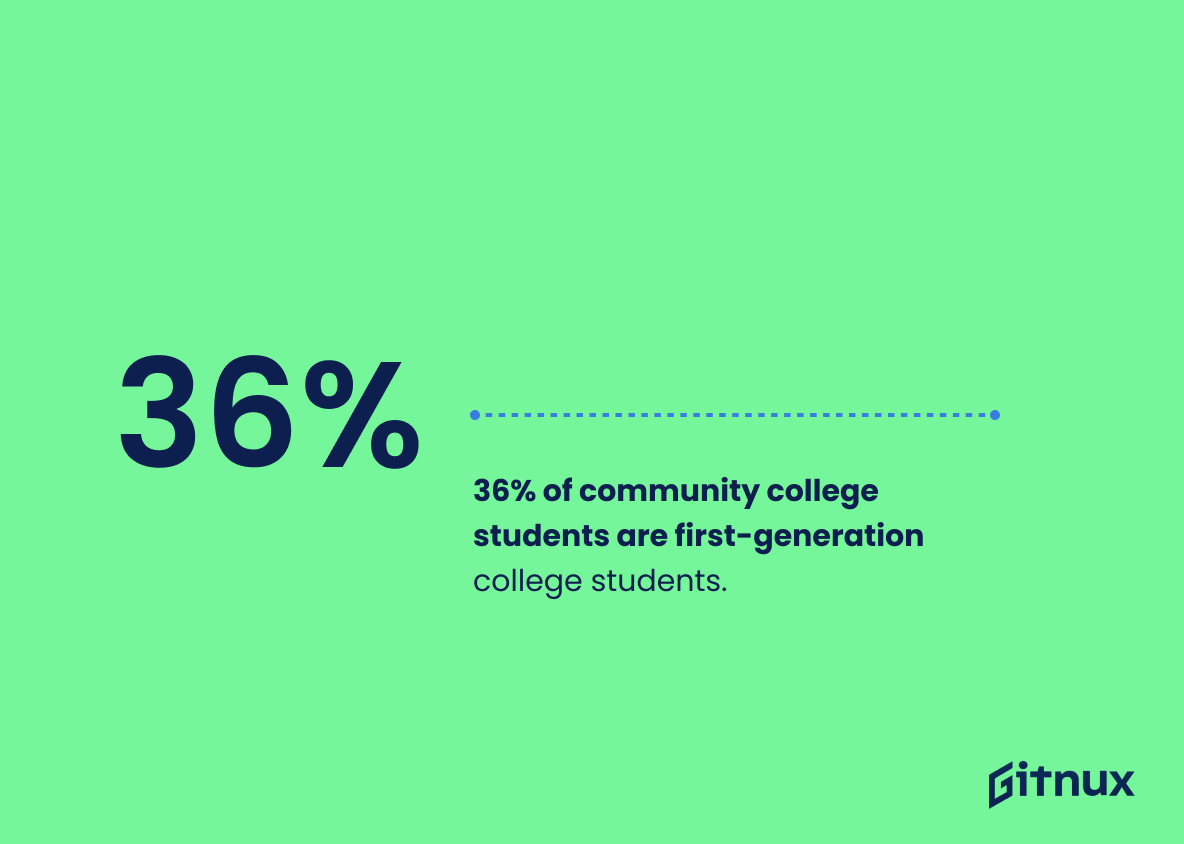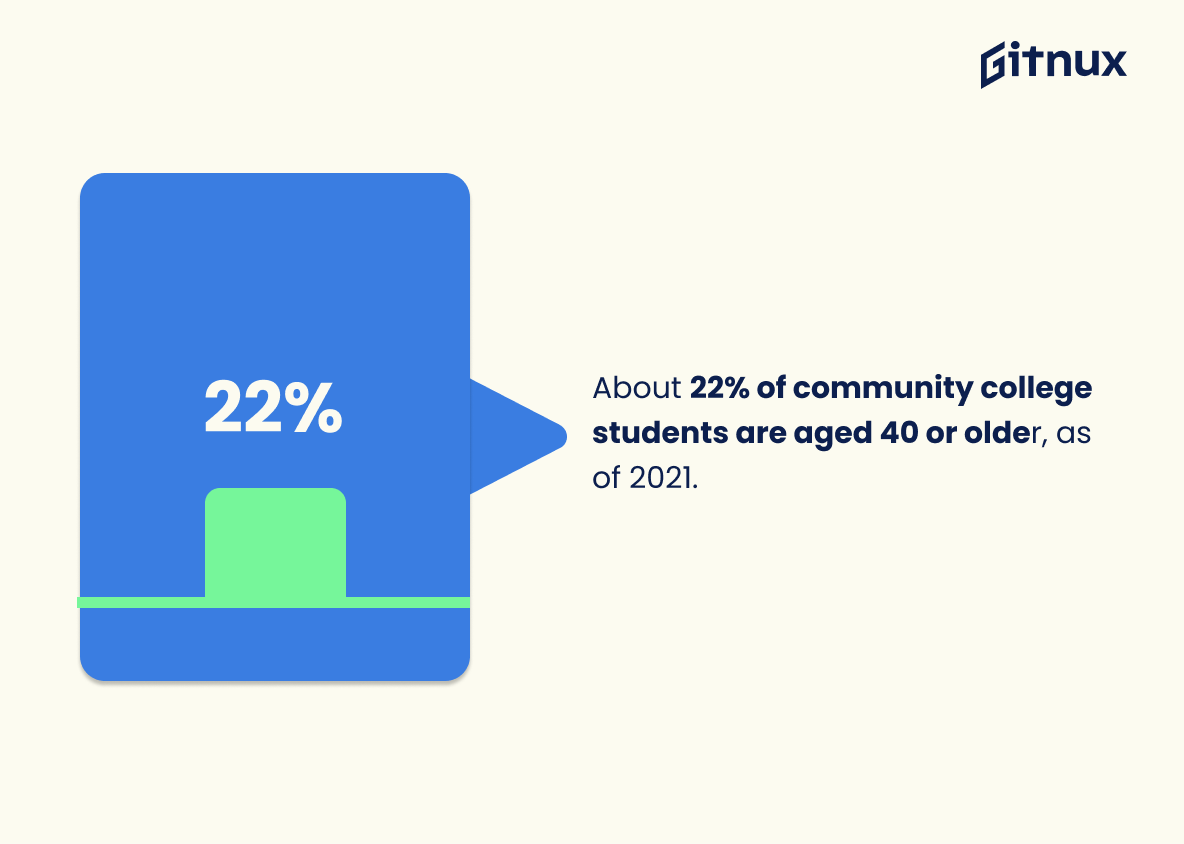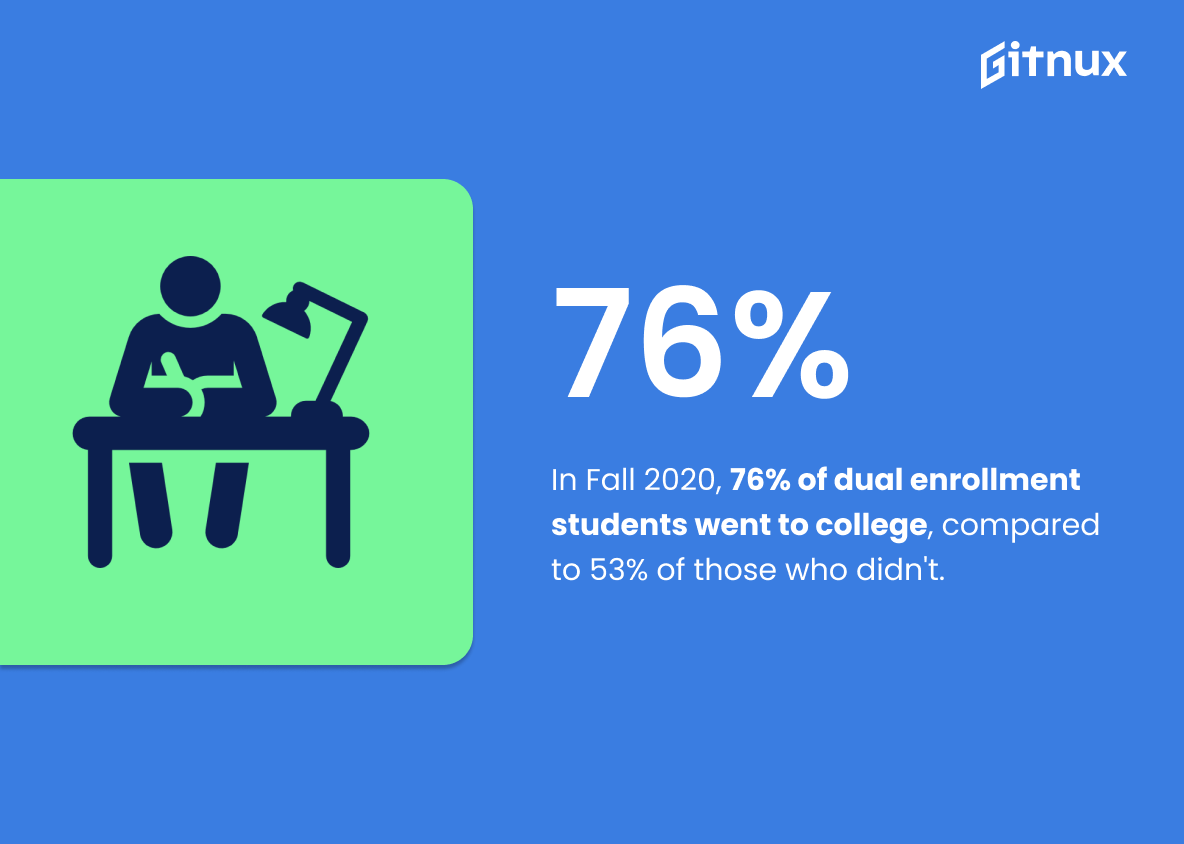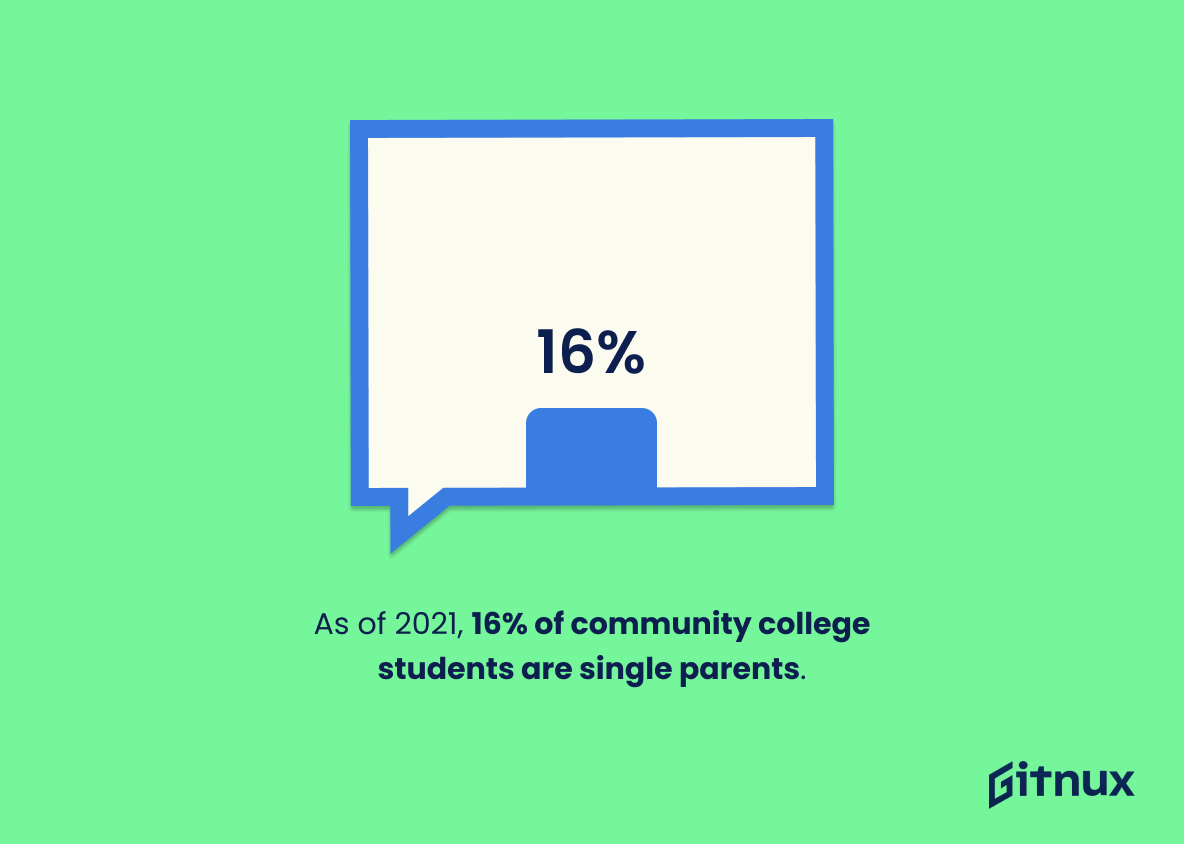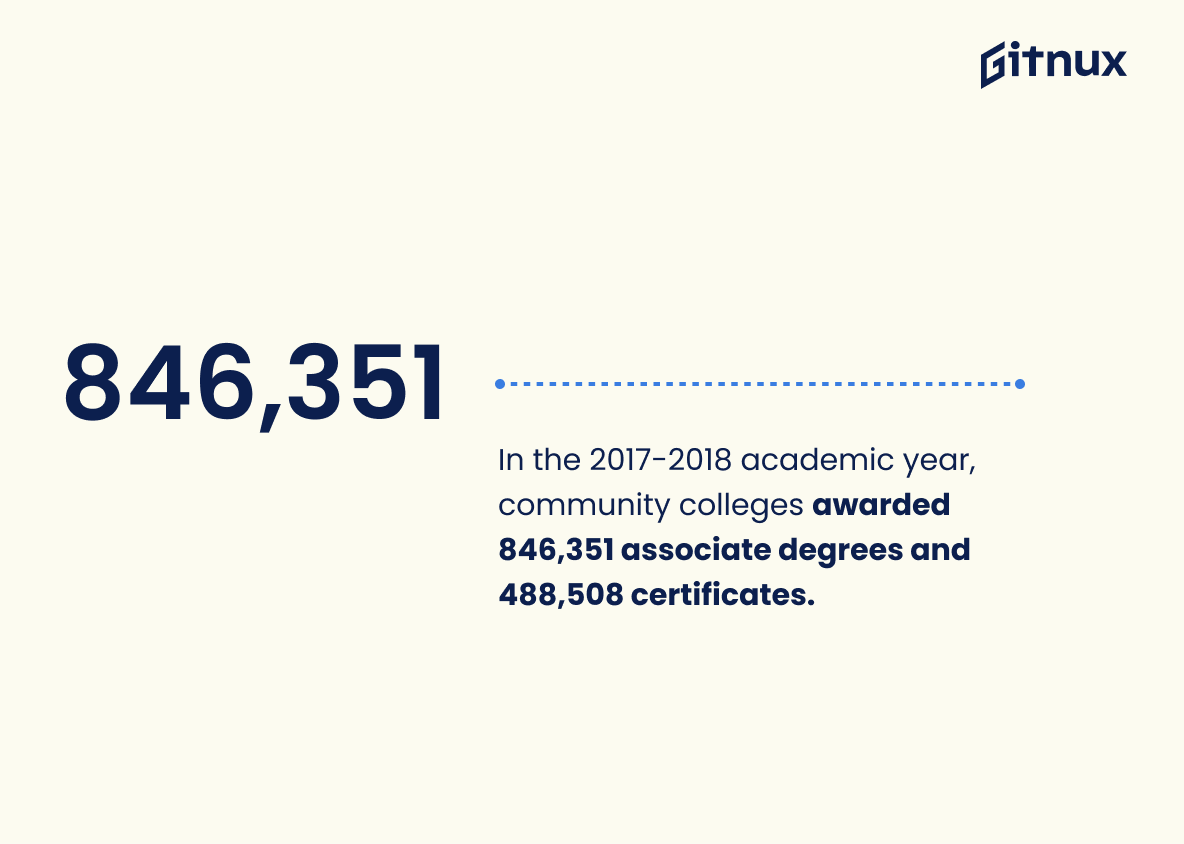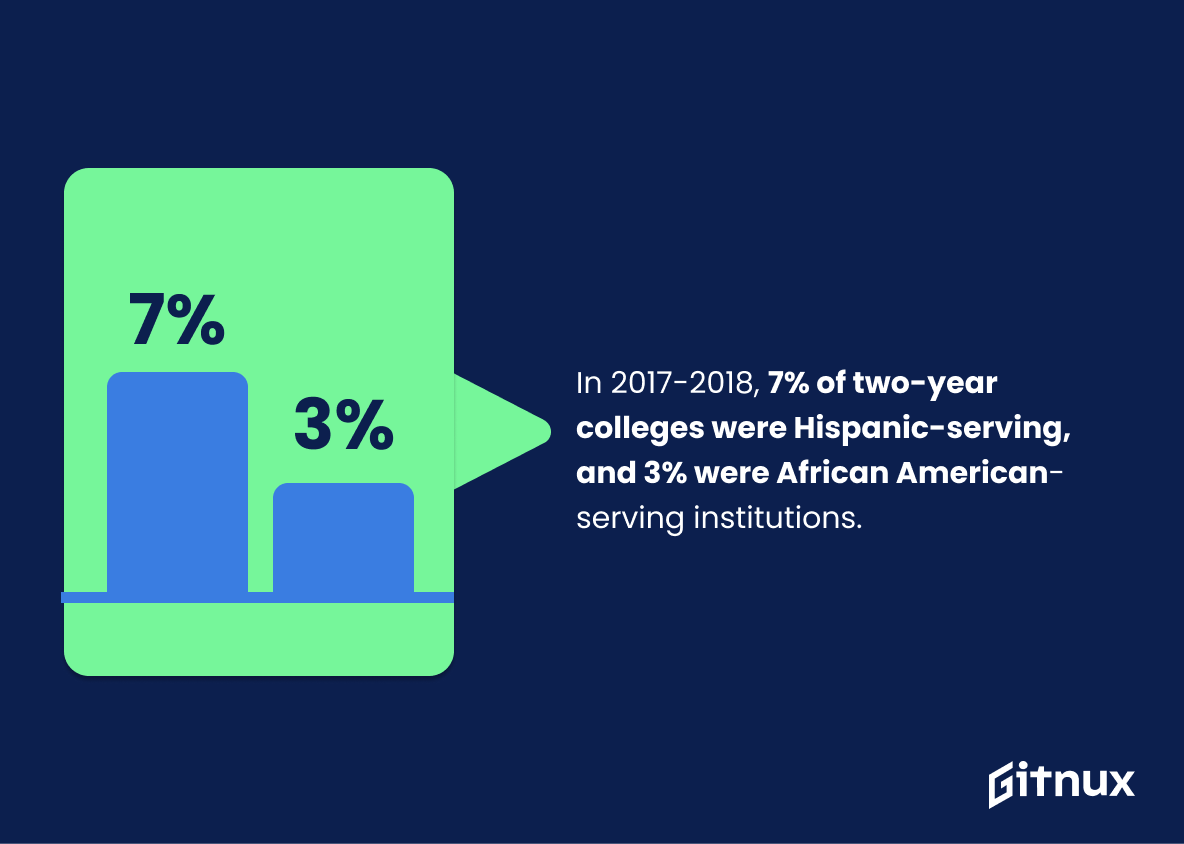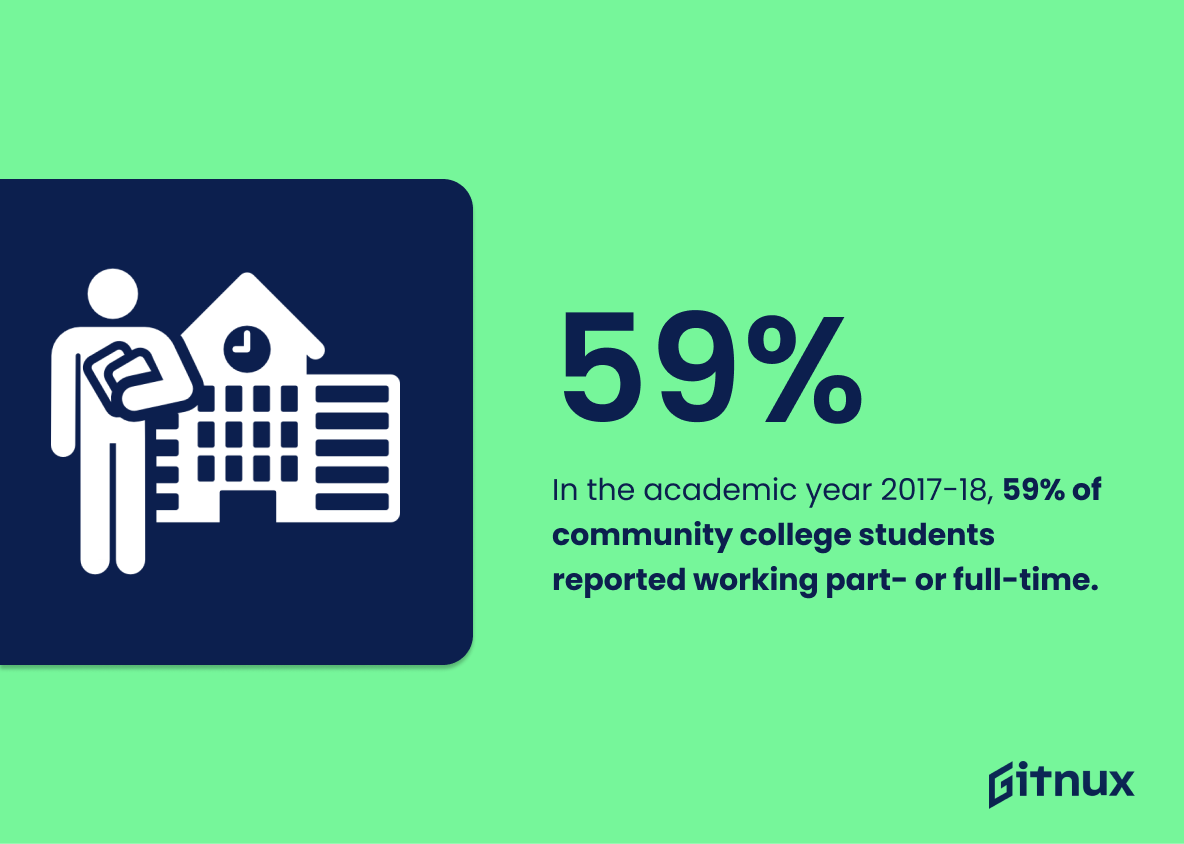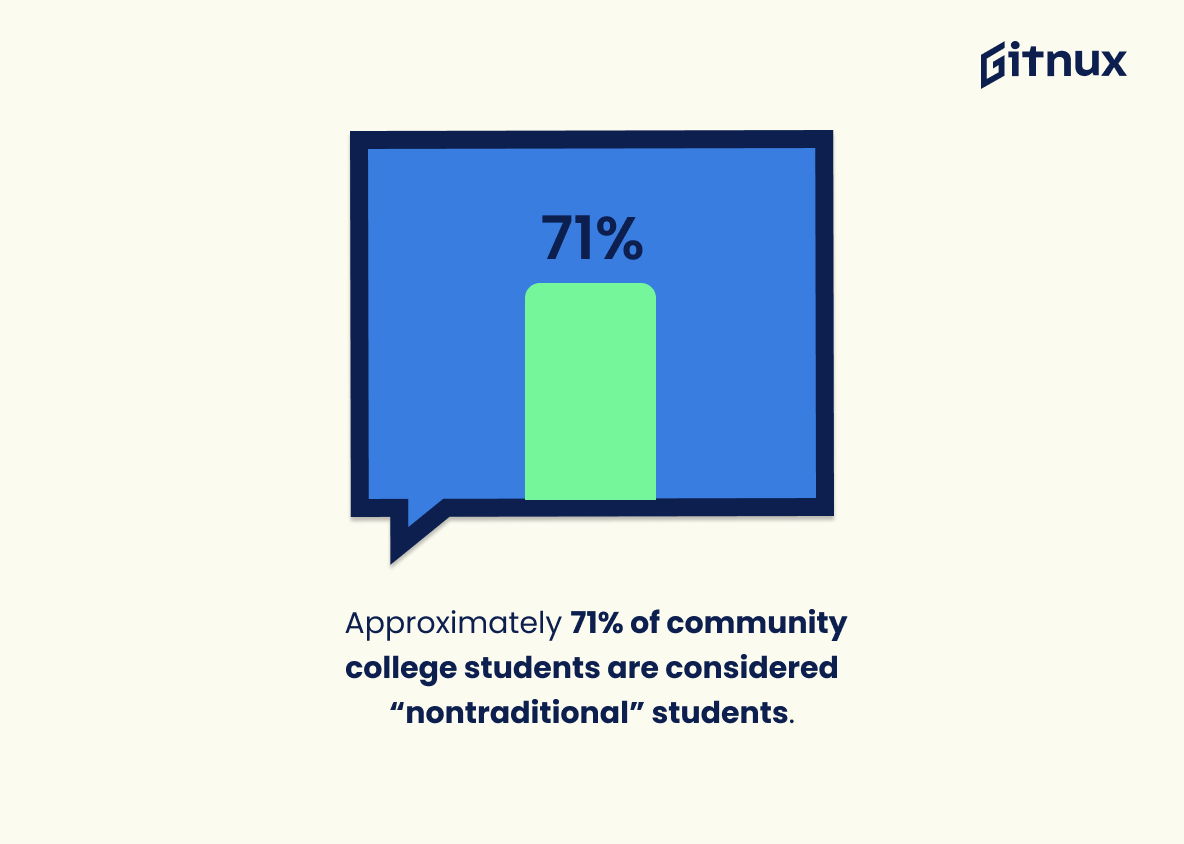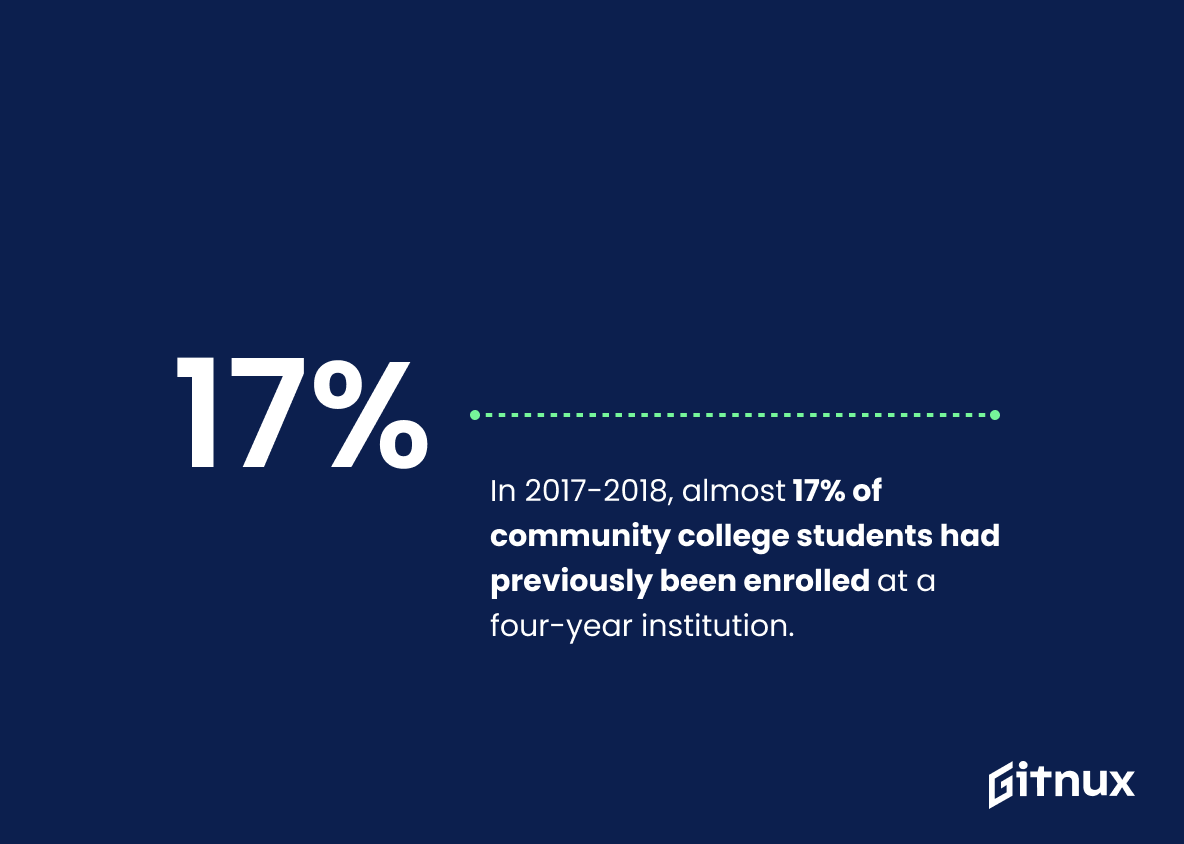As of Fall 2020, community college enrollment in the United States has seen a decline of 10.1% compared to the previous year. In 2019, U.S. community colleges enrolled over 5.5 million students in credit-bearing courses and California alone had 115 such institutions with 2.1 million students enrolled for that academic year – 41% of all undergraduate students nationwide were at public two-year colleges during this time period as well.
In 2021, nearly 56% of these college goers are part-time enrollees while 36% are first generation college attendees; African American and Hispanic student populations make up 13%, 26%, respectively whereas White students account for 43%. Of those attending community colleges 63% focus on transfer programs while 37 % pursue occupational studies – 22 % being 40 years or older adults too. Additionally, Pell Grants have been awarded to 37 percent of them during 2017–2018 school year and dual enrollment classes saw 76 percent enrolling into higher education from high schools versus 53 percent who did not take any such coursework priorly . Single parents constitute 16 % among them , 846351 associate degrees & 488508 certificates were granted by Community Colleges in 2017–18 session ; 7&3percent HSIs & ASIs respectively plus 27 point five graduation rate was recorded amongst full time undergraduates at Public Two Year Schools same season . Lastly 46 Percent American Indian/Alaska Native Students attend two year institutes alongwith 59 Percent working Part /Full Time Jobs & 17Percent having previously attended four years universities before joining Community College Programs .
Community College Enrollment Statistics Overview
In California, there are 115 community colleges, with over 2.1 million students enrolled for the 2019-2020 academic year.
This statistic is a powerful testament to the importance of community colleges in California. With over 2.1 million students enrolled, it is clear that community colleges are providing an invaluable service to the state’s population. This statistic highlights the need for continued investment in community colleges, as well as the need for more resources to ensure that all students have access to the education they need.
As of 2021, nearly 56% of community college students are enrolled part-time.
This statistic is a telling indication of the current state of community college enrollment. It reveals that a majority of students are not taking on a full course load, which could be due to a variety of factors such as financial constraints, family obligations, or a desire to balance work and school. This statistic is important to consider when discussing the overall enrollment trends of community colleges.
36% of community college students are first-generation college students.
This statistic is a powerful reminder of the importance of community colleges in providing educational opportunities to those who may not have had access to higher education in the past. It speaks to the fact that community colleges are often the first step for many students in achieving their educational goals, and that they are a valuable resource for those who may not have had the same opportunities as their peers.
About 22% of community college students are aged 40 or older, as of 2021.
This statistic is a testament to the fact that community college is no longer just a stepping stone for high school graduates. It is a viable option for adults of all ages who are looking to further their education and gain new skills. This statistic highlights the fact that community college is a great option for those looking to make a career change or gain new qualifications.
37% of community college students received Pell Grants in the 2017-2018 school year.
This statistic is a telling indication of the financial burden many community college students face. It highlights the need for more financial aid and support for those who are unable to afford the cost of tuition and other expenses associated with attending college. It also speaks to the importance of making higher education more accessible and affordable for all.
In Fall 2020, approximately 76% of students who took a dual enrollment class in high school ended up enrolling in college, compared to 53% of students who did not take a dual enrollment class.
This statistic speaks volumes about the value of dual enrollment classes in preparing students for college. It suggests that taking a dual enrollment class in high school can give students a significant advantage when it comes to college enrollment, with a 23% higher rate of college enrollment among those who took a dual enrollment class. This is an important statistic to consider when discussing community college enrollment statistics, as it highlights the importance of dual enrollment classes in helping students transition to college.
As of 2021, 16% of community college students are single parents.
This statistic is a powerful reminder of the unique challenges faced by single parents who are attempting to pursue higher education. It highlights the need for increased support and resources for these individuals, who are often juggling the demands of parenting and college simultaneously. It also speaks to the importance of community colleges in providing accessible and affordable education to those who may not have the same opportunities as their peers.
In the 2017-2018 academic year, community colleges awarded 846,351 associate degrees and 488,508 certificates.
This statistic is a testament to the success of community colleges in providing students with the opportunity to gain valuable skills and knowledge. It shows that community colleges are a viable option for those looking to pursue higher education, as they offer a wide range of degrees and certificates. Furthermore, the sheer number of degrees and certificates awarded indicates that community colleges are a popular choice for students, as they provide an affordable and accessible way to gain qualifications.
In 2017-2018, 7% of two-year colleges were Hispanic-serving institutions (HSIs), while 3% were African American-serving institutions (ASIs).
This statistic is a telling indication of the disparities in access to higher education for minority groups. It highlights the fact that while HSIs and ASIs are making strides in providing educational opportunities to Hispanic and African American students, there is still a long way to go in terms of achieving equity. This is an important point to consider when discussing community college enrollment statistics, as it provides insight into the challenges faced by minority students in accessing higher education.
During the 2019-2020 academic year, the national graduation rate for full-time, first-time undergraduate students at public two-year schools was 27.5%.
This statistic is a telling indication of the success of community college enrollment. It shows that, despite the challenges of attending a two-year school, a significant portion of students are able to complete their studies and graduate. This is a testament to the dedication of the students, as well as the quality of the education they are receiving.
In the academic year 2017-18, 59% of community college students reported working part- or full-time.
This statistic is a telling indication of the financial burden that many community college students face. It suggests that a majority of students are relying on part- or full-time employment to support themselves while attending school, which can be a major obstacle to their academic success.
Approximately 71% of community college students are considered “nontraditional” students.
This statistic is significant in understanding the current state of community college enrollment. It highlights the fact that the majority of students attending community college are not traditional students, meaning they are older, have dependents, are working, or are attending part-time. This statistic is important to consider when discussing the various challenges and opportunities that community college students face.
In 2017-2018, almost 17% of community college students had previously been enrolled at a four-year institution.
This statistic is significant in understanding the current state of community college enrollment. It indicates that a significant portion of community college students have already experienced the four-year college experience, and may have chosen to pursue a different educational path. This could be due to a variety of factors, such as cost, location, or the availability of certain programs. Understanding this statistic can help to inform decisions about how to best serve the needs of community college students.
Conclusion
The data presented in this blog post paints a comprehensive picture of community college enrollment statistics. From the overall decline in enrollment to the demographics and types of students enrolled, it is clear that community colleges are an important part of higher education for many individuals across the United States. Community colleges offer diverse educational opportunities, from transfer programs to STEM fields, as well as support services such as dual-enrollment classes and financial aid options like Pell Grants. Despite recent declines due to COVID-19, these institutions remain vital resources for millions of Americans seeking access to quality education at affordable prices.
References
0. – https://www.ccrc.tc.columbia.edu
1. – https://www.www.communitycollegereview.com
2. – https://www.www.ccsse.org
3. – https://www.nces.ed.gov
4. – https://www.www.cccco.edu
5. – https://www.www.insidehighered.com
6. – https://www.www2.ed.gov


